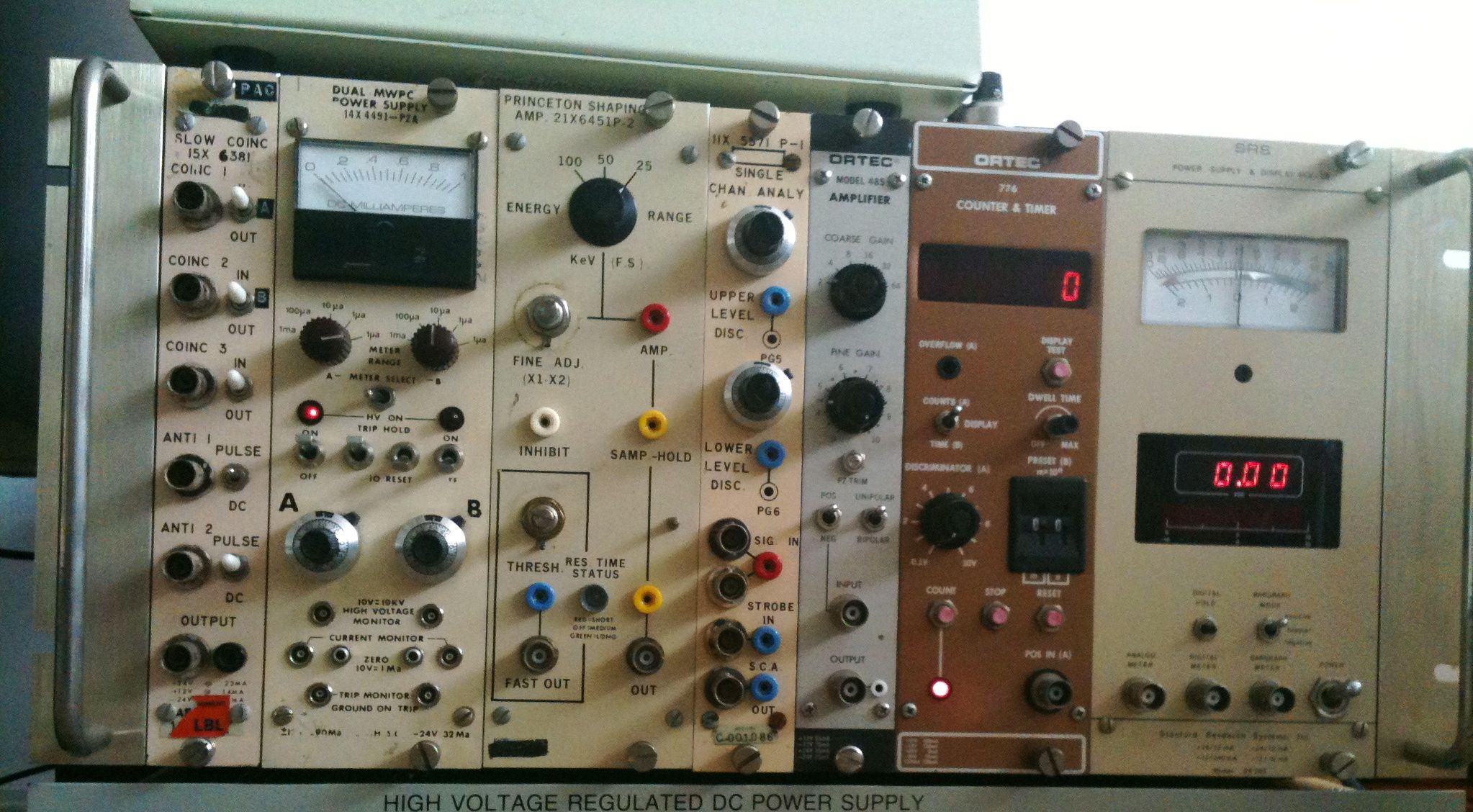Signal filters for the Gamma spectrometry
The filter that you see in this simulation is part of the first research, definitive patterns of PmtAdapter are here: www.theremino.com/technical/schematics
The three pulses (negatives) visible in the simulation are:
RED: impulse produced by the photomultiplier tube ( 1uS – 10 Volts )
WHITE: boost after the first cell goes down ( about 10 uS – 1 Volts )
GREEN: boost after the second low pass cell ( about 300 uS – 20 MV )
Only the third impulse ( sometimes called “Gaussian” because of its shape ) can be sampled accurately from a sound card. The second pulse, as far as slowed, still has the sharp tip and only rarely will a sample exactly on its tip. The inaccurate sampling produces a widening of the rows. This effect is minimized by impulses with form “Gaussian”, They provide a broad horizontal area, to minimize errors even at 48 KHz.
When watching the pulses with software viewers these forms are very dull, due to the limited bandwidth of your sound card, and also seem wide enough (tens of microseconds) but don't get your hopes up: without a double filter RC incoming impulses to the sound card are narrow and sharp. Then spread out but, Although their characteristics not seen more, the damage they have already made.
Comparison with the filters and the ADC hardware from the last century.
How beautiful are these hardware modules of Flintstones!
Too bad that after a while’ for years the potentiometers are beginning to scratch, switches make contact only on Thursday and that, even under the best conditions, the results are lower than those in software.
Questi ADC hardware sono velocissimi (ma serve a poco) ma in compenso hanno un rapporto segnale rumore di soli 60 dB contro i 110 dB raggiungibili con gli ADC della schede audio recenti (e questi servono davvero)
Inoltre i loro alimentatori sono rumorosissimi (from 5 MV to 50 MV pep) in confronto agli alimentatori che usiamo attualmente (sotto i 200 uV pep)
Non si tratta solo di spendere tanto o poco, ci sono di mezzo 30 anni di miglioramenti.
Comments
Of course you can leave comments, questions and advice.



The user 81lmc7101, author of the http://www.youtube.com/watch?v=P_WpkaLX0BQ wrote: “Nice and powerful software! Thank you! Btw, low energy resolution is weaker than with PRA. Please, tell me about ideal pulse shape for this software – I will make filter.”
Without filter
——————————————————
Also without filtering it is also possible to get resolutions down to about 7% FWHM using the “Baseline Restorer” and the “Dead Time”
– use a sampling frequency of 192 KHz (imperative without filters)
– set to 50 and 50 the “Baseline Restorer” and 250 the “Dead time”
– do not send to the audio card input pulses with amplitude not more than some volt. (measured with a true hardware oscilloscope) (Notes 1)
– set all the “Record Mixer” sliders to not more than 70%
– if your pulses are too much near one to other, please raise the distance from the radioactive sample to the scintillator (to get no more than 200..500 pulses per second)
Notes 1
The audio card attenuates a lot the out-of-band pulses (pulses < 50uS) To get a useful signal with so short pulses the only method is to increase the pulse voltage. Someone sends to the sound card pulses of 1uS with a height of 30 Volt !!!!! In this situation happens the following: - the sound card input components are completely saturated - the linearity of the high energies is loosed (the poor PMT is not the responsable of this) - the antialias filter produces tons of ringing - the distorsions produced creates so much noise that the low details are completely masked With filter ------------------------------------------------------ The best filter is composed by two low pass cells With only one cell the top is too much sharp to sample it with precision. (please analyze the dots on the pulse top in the Pulse visualizer) It is also important to increase the rising time enought to eliminate ringings And, if possible, to completely eliminate the baseline shifting using "bipolar pulses", (pulses with the same positive and negative areas" Please write on our Blog so, with the help of the community, we will find the best circuit and schematics. In this page, with the halp of the community, we will find the best and simplest filter. Bye Livio
I would like to see digital filter at input to theremino mca having a high freq cutoff adjustable to 2khz or higher. This is to filter noise at the high frequency end. Would likely help a bit with pulse shape but really meant to minimize the noise floor.